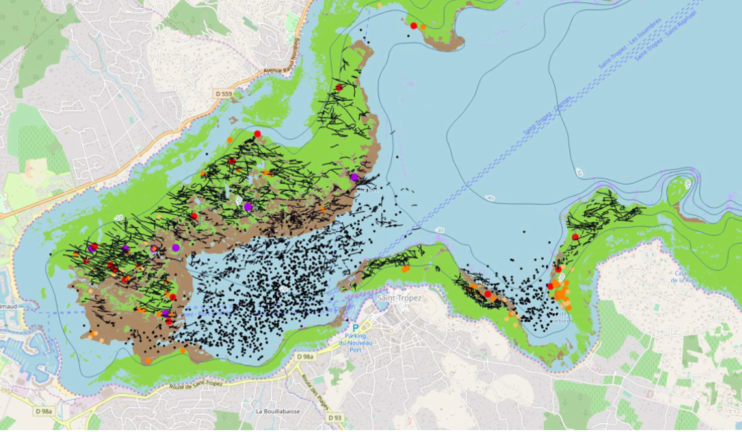Impacts /Interactions for Leisure boating
As with all human activities, leisure boating inevitably generates environmental and social impacts: the extent to which it is compatible with a healthy marine environment is one of the main questions concerning its sustainability.
Impacts vary greatly according to the type and size of boat.
Main pressures include:
● Anchorages on sensitive habitats such as Posidonia meadows. Large and super yachts with large anchors cause the most damage to the sea bed. Inexperienced boaters, such as those who usually rent small boats without a navigation licence, also cause more damage than their experienced peers
● Air pollution from hydrocarbon releases by motor engines, particularly from 2-stroke engines and high-speed boats
● Fuel and oil leaks, including those from bilge waters
● Sediment suspension from motorboats passing over sandy or muddy bottoms, contributing to the turbidity of the water
● Motor noise disturbance, particularly from high-speed boats
● Impact from human waste: black (sewage) and grey (washing) waters which contain a wide range of toxic chemicals and fats
● Toxic antifouling paints that are used to prevent marine organisms developing on the surface of the hull, as well as harmful cleaning products
● Invasive species dissemination through involuntary transport
● Artificial light emissions
Map of a Posidonia meadows and marks from moorings in the Saint-Tropez bay, France (Source: Medtrix, 2019)
Other impacts include boat strikes on marine mammals and turtles, and harmful actions like fish feeding, collecting sea animals and dropping marine litter.
The largest impact that leisure boating has on MPAs comes from anchoring. Damage to Posidonia meadows, coralligenous assemblages and maërl bottoms tends to be proportional to the size of the ship: the larger boats and superyachts do more damage because they have bigger anchors and heavier chains. Among other local stressors, leisure boating has had a major influence on the estimated 34% reduction in Mediterranean Posidonia meadows over the last 50 years.
The two-stroke engines used by many leisure craft are one of the major sources of air and water pollution in coastal areas. It is estimated that 20-30% of the fuel and the added oil that these engines use is emitted unburned directly into the water. At low speeds, up to 40% of the fuel entering a cylinder might escape unburned while at the most efficient operating range 8% of the fuel is expelled as exhaust.
